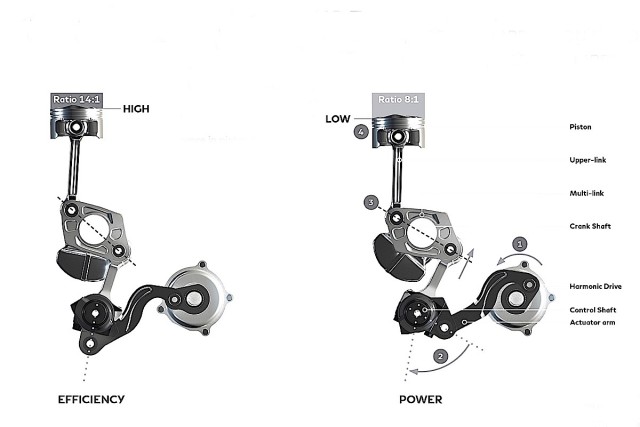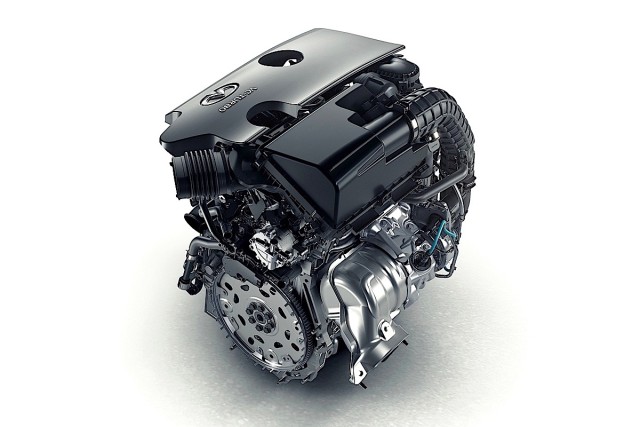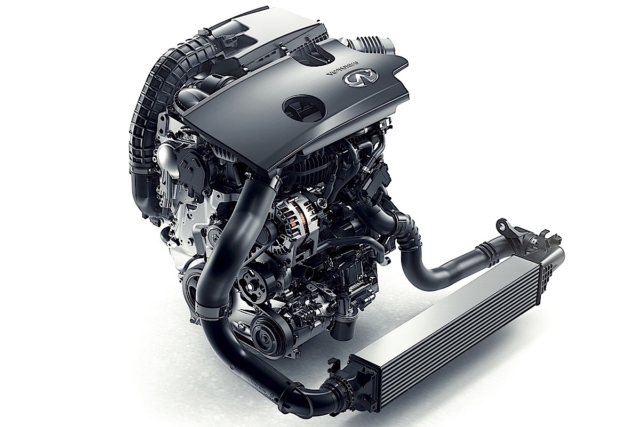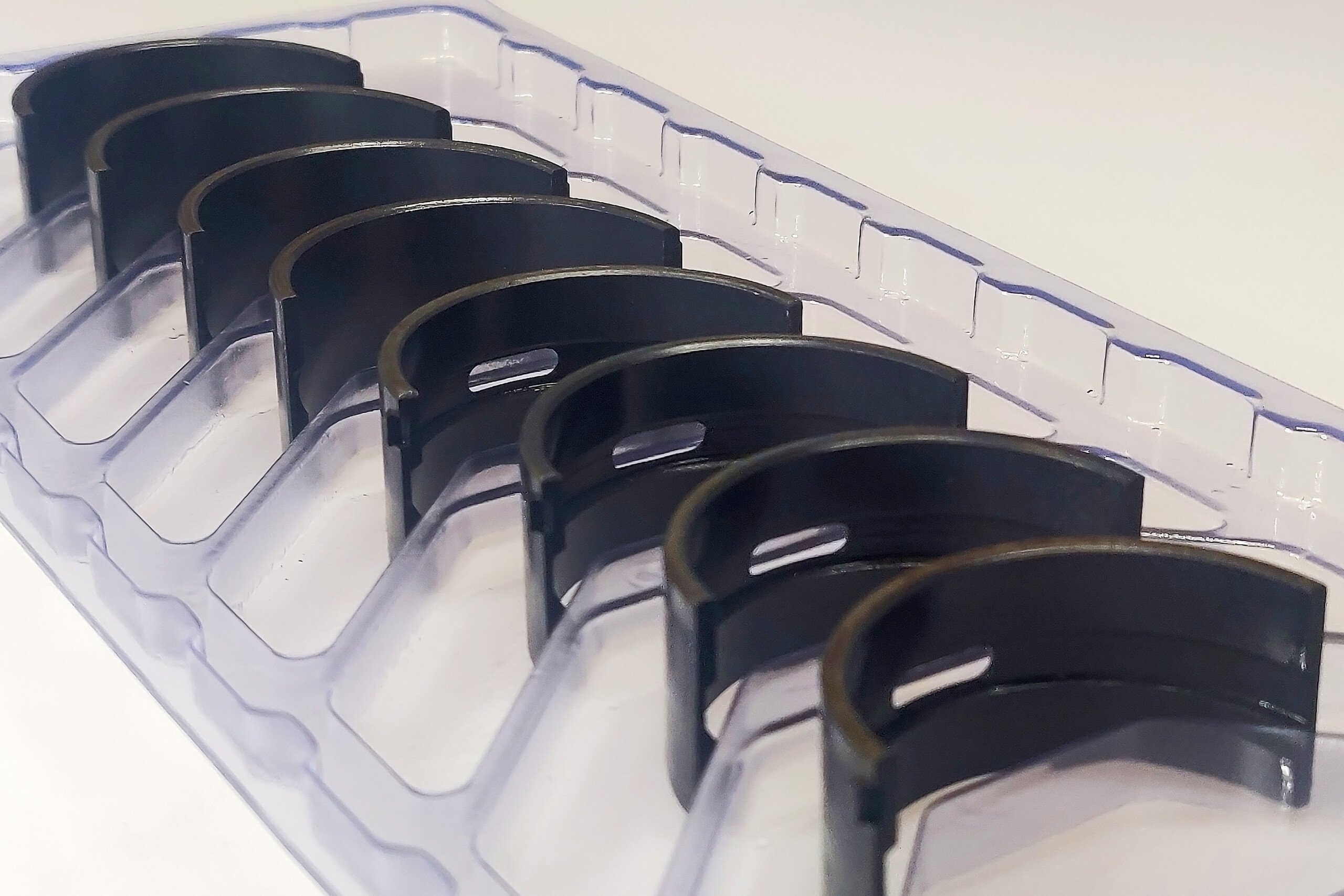 An engine that can vary its compression ratio between 8:1 and 14:1 will enter production when the new Infiniti QX50 hits the showroom.
An engine that can vary its compression ratio between 8:1 and 14:1 will enter production when the new Infiniti QX50 hits the showroom.
Following more than 20 years of development, VC-T–or Variable Compression-Turbocharged–will be the new technology buzzword as the 2.0-liter turbo-4 is introduced at the 2016 Paris Motor Show next month.
“VC-T technology is a step change for Infiniti,” says the automaker’s president, Roland Krueger. “It is a revolutionary next-step in optimizing the efficiency of the internal combustion engine. This technological breakthrough delivers the power of a high-performance 2.0-liter turbo gas engine with a high level of efficiency at the same time.”
EngineLabs has looked at variable compression before, focusing on a unique connecting-rod design that alters the center-to-center distance. When the rod length increases, the compression ratio increases because there’s less cylinder volume at top-dead-center. With the shorter rod, there’s more cylinder volume at TDC and a lower compression ratio.
The Infiniti engine design relies on a complex system of shafts, levers and eccentrics to adjust the position of the piston relative to the combustion chamber at TDC. The accompanying illustrations demonstrates just how mechanically intricate the hardware is set up. Basically, there’s a pivot arm on the crankshaft that on one end is connected to a piston via a link, and on the other end is connected to a control shaft that is adjusted via a harmonic drive and actuator arm. When the pivot arm changes angle, the piston height changes accordingly in the cylinder.

More than 20 years in development, Infiniti’s new 4-cylinder turbocharged gasoline VC-T engine represents a major breakthrough in internal-combustion powertrain technology.
The strategy is provide a low compression ratio while under power and full boost. But when the engine is at low rpm and the turbos are not pressurizing the cylinder, the engine is very inefficient due to the low compression ratio. Under low load conditions and 14:1 compression ratio, the engine will act more like an efficient non-boosted engine. But when the driver asks for more power and turbos spool up, then the compression ratio drops, allowing the turbos to do their job more efficiently and without the detonation potential of a high compression ratio. Infiniti says sophisticated engine controls manage the compression ratio seamlessly, depending on the driving conditions. In addition to better fuel economy, Infiniti says there is reduced noise and vibration levels and the engine comes in a tighter package.
When used with variable valve timing, even more efficiency can be achieved, such as transitioning to the Atkinson cycle.


















